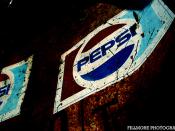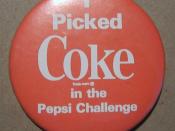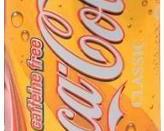Industry Wrap.
The soft drink industry is largely a duopoly. Coke and Pepsi were among the first to launch carbonated soft drinks (CDS). For over a century other companies tried to enter the market but had to face fierce competition and lawsuits from Coke and Pepsi. The worldwide demand for soft drinks in 1999 was 31 billion cases. Coke and Pepsi together held 74% of market share followed by Cadbury Schweppes at 6%. In this duopoly, participating firms are assured of high long-term economic rents, and there are high barriers of entry. Being the established sellers, Coke and Pepsi can persistently raise prices above competitive levels without any significant threat of new entrants (e.g. 1978 Coke had a significant price hike, and Pepsi followed by 15% price increase). Even though, in recent years, demand for CSDs seems to have levelled off in USA, other countries have the potential to offer significant growth opportunities.
New challenges of the 21st century included boosting flagging domestic cola sales and finding new revenue streams. Both firms also began to modify their bottling, pricing, and brand strategies. They looked to emerging international markets to fuel growth and broaden their brand portfolios to include noncarbonated beverages like tea, juice, sports drinks, and bottled water. Additionally, the soft drink industry is knowledge intensive; most of the significant costs are for advertising, promotion, and market research. Any innovation costs have been sunk in the past.
1. Compare the economics of the concentrate business to the bottling business. Why is the profitability so different?
From Exhibit 5, a typical concentrate producer's gross profit is 83% compared to 35% for a typical bottler. Similarly, pre tax profit for a concentrate producer is 35% and it is 9% for a bottler. The cost of goods sold for a concentrate producer...



Coco cola
Has some good information
0 out of 0 people found this comment useful.